Transforming education: Five tasks
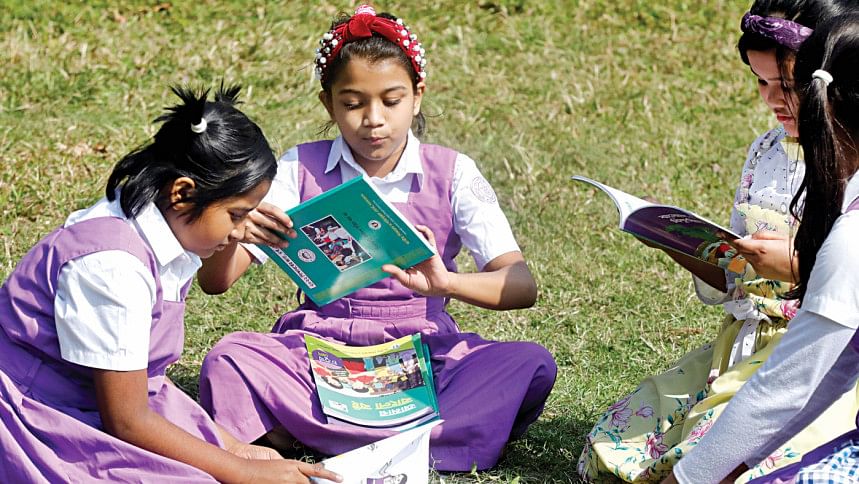
Identifying critical tasks
Which five tasks should be on top of the list of someone appointed as the education tsar of Bangladesh? The question was posed by Dr. Binayak Sen, Director General of Bangladesh Institute of Development Studies in a public discussion about this writer's recent book Ekush Shotoke Bangladesh -- Shikkhar Rupantor (Bangladesh in the 21st Century – Transformation of Education, published by Prothoma).
My off-the-cuff response was two-fold. That reforming the education system, a complex and multi-dimensional area of national endeavor, called for more than "silver bullets" or ticking off a short list of specific actions. And, that educational leadership required collective consensus-building, rather than the mere inspiration of a supremo. I went on to say that areas of priorities in policy and actions have to be identified, a broad consensus built on these, and plans and strategies formulated and implemented accordingly, in which committed and bold leadership would have a critical role. So would be good-faith political backing that supports the process of academics and professionals interacting with major stakeholders, while politicians and bureaucrats restrain their urge to micro-manage and make ad hoc interventions.
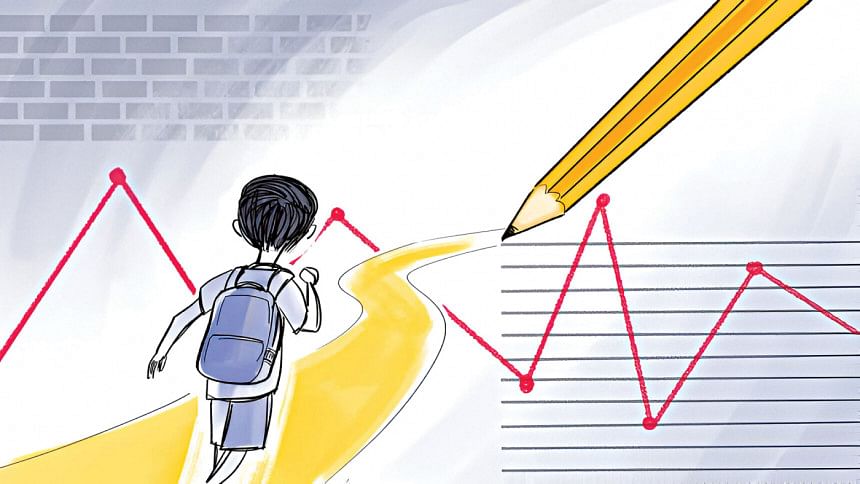
Grasping the large picture, setting policies and goals based on this understanding, planning pragmatic short and longer-term actions accordingly, and implementing the actions effectively and in an accountable manner -- this is what was discussed in the book on the subject of the transformation of education. Twenty action points were proposed as the distillation of what needed to be done in six major subsectors, from school education to tertiary level and vocational skill development to madrasas. Also, included in this enumeration necessary actions in four cross-cutting areas, such as preparing the education workforce, moral and ethical development of the next generation, governance of the system, and financing the sector. A chapter of the book was devoted to each of these topics.
Partial view and reactive response
As argued in the book, the initiatives, and efforts in reforming and improving the education system of Bangladesh are characterized by three tendencies: a) fragmented and partial actions rather than strategies and actions based on a comprehensive view of the education sector, thus, neglecting the links to and effects of specific steps on rest of the subsectors or the whole education sector; b) a reactive approach to symptoms of disease or manifestation of a problem rather than diagnosing and addressing the roots of the problem; and c) the habit of pursuing "within the box" familiar solutions for reform and change, without rocking the boat.
The fragmented, reactive, and "within-the-box" character of education development actions is reflected in some major features of the system in Bangladesh. First, we do not have an education sector development plan. There are proclamations regarding very general goals such as the Sustainable Development Education Goal (SDG4), the "smart Bangladesh" slogan, and a compilation of the two ministries' intentions in the five-year development plan document. In respect of actual activities, there are various subsector projects, such as those for primary and secondary education or parts of vocational and tertiary education. Missing is an overall education sector plan that ties together or guides various sub-sector activities that contribute to well-articulated and time-bound national education and human development objectives.
With assistance from the Global Partnership for Education (GPE) and UNESCO, a national team prepared a medium-term draft education sector plan in 2020, which remains a hardly noticed document due to a lack of interest and ownership by the two ministries of education. The draft sits on the website of GPE, an international education funder based in Washington DC, as a document sent as a draft by the former Minister of Education, but cannot be found on the website of either of the Education Ministries even as a provisional draft.

Secondly, the divided jurisdiction of education, especially school education, between two ministries unlike in any other country, has become a major obstacle to adopting a holistic and comprehensive view of K-12 school education. Bangladesh has accepted for a long time the state obligation to ensure quality school education for all children up to class VIII. Now under SDG4, it is also pledge-bound to provide equitable and free secondary education of acceptable quality to all children by 2030. However, the turf battle between the two ministries has thwarted concerted action to achieve universal education up to class VIII and preparing a plan to move towards fulfilling the goal of universal secondary education. The divided jurisdiction is also partly an impediment to resolute leadership for preparing an education sector plan.
Thirdly, under the Awami League government, in power since 2009, the National Education Policy 2010 was adopted and endorsed by the Parliament. However, a coordinated and comprehensive action plan and mechanism for its implementation have not been taken up by the government in the last 15 years. As a result, not much progress has been made concerning major objectives of the policy, such as ensuring school education of acceptable quality for all children adhering to minimum common standards of facilities, teaching staff, and a core curriculum shared by all; major moves towards decentralization of education governance and management; and significant departures in teachers' professional preparation, standards, performance and adequacy of their numbers.
The ambitious aim of curriculum revision and new textbooks is to equip the new generation with relevant skills and competencies for the 21st century, weaning them away from memorizing guidebooks and relying on private tutors and coaching centers to pass tests without real learning.
Recognizing the complexity and barriers that have to be overcome to realize these objectives, the 2010 policy recommended the formation of a permanent, statutory education commission to monitor, guide, and report on the nation's progress toward implementing the policy objectives. The decision-makers have remained averse to heeding this advice.
Fragmented approach to reforms
The pattern of partial, reactive, and fragmented approaches to problems is illustrated by the new curriculum and textbooks for school education being rolled out in 2022. The ambitious aim of curriculum revision and new textbooks is to equip the new generation with relevant skills and competencies for the 21st century, weaning them away from memorizing guidebooks and relying on private tutors and coaching centers to pass tests without real learning. Major changes are foreseen in classroom pedagogy and student assessment.
Outcomes somewhat similar to the above were also promised when national public exams were introduced at the end of Classes 5 and 8 in 2009 and 2010, and when "creative questions" began to be used in all public exams. The objectives of the initiatives or the theoretical justification for the public examinations and the creative questions (structured questions based on Bloom's taxonomy of knowledge used in many countries) were not wrong. The past experiments did not work because the basic conditions for implementing the changes were not present in our school system. Most critically, the teachers were not prepared and did not have the skills and necessary motivation. They could not be trained to do their part and were not given the support and supervision needed. They were not motivated because of the adverse working conditions and lack of incentives to perform. Too meager public investments in education meant too large class sizes, poor physical conditions, and little by way of learning aids (other than textbooks, which apparently students did not want to use). It is often said that a major expansion of education has been bought cheaply by sacrificing learning outcomes for children. This situation has not changed enough to produce visible results.
The 2030 SDG agenda and the 2041 vision of reaching the status of a developed country call for wide-ranging change in the education scenario, but the pace and nature of change do not show that we are on track to bring about the envisioned difference.
The newly appointed Minister of Education has promised to listen to stakeholders and experts beyond those who have been too closely involved with the present initiative to avert the looming risks to children. A pragmatic solution requires taking some time for reflection and learning and adjusting the timetable for rolling out the reforms.
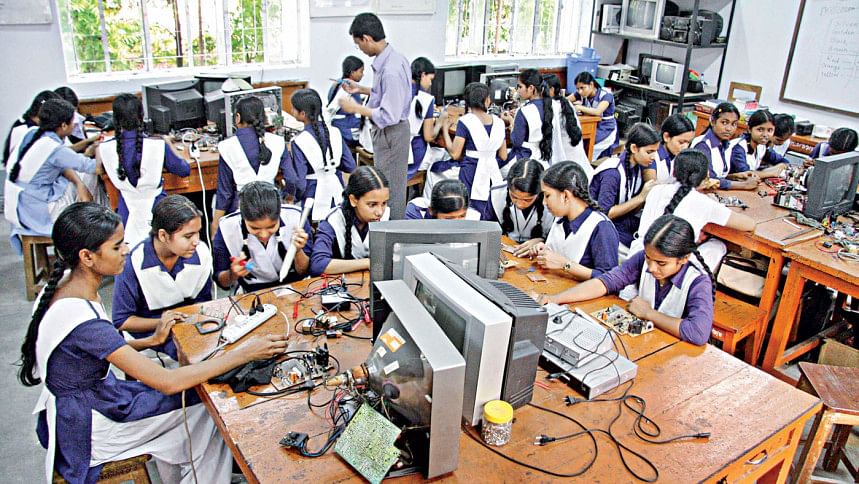
Five critical tasks
So what about the five critical tasks in education? As noted, silver bullets will not provide the solutions. At the same time, everything cannot be done all at once. Setting priorities, identifying catalytic measures that may trigger a chain of positive changes with cumulative results over time is necessary. In fact, the new curriculum and textbook initiatives, as well as other activities, such as the distribution of millions of free school textbooks at the beginning of each year, ICT-assisted multi-media classrooms, and monthly stipends to millions of primary and secondary students have been presented as game-changers in education. It did not quite turn out that way.
Each of the actions individually is important and has made a varying degree of difference in our school education. But overall, these activities, individually or collectively, have not made a sufficient difference, beyond expanding access, in learning outcomes. As has been reported in official student assessments and other studies, the needle has not moved significantly concerning learning outcomes over the last three decades. More than half of the children completing primary education do not acquire a functional and self-sustaining level of literacy and numeracy. With this weak foundation, there is a knock-on negative effect at secondary and tertiary levels of education and vocational-technical skill formation. Evidence also suggests that education, with the predominance of private tutoring and coaching, has become more of a commodity in the last two decades, available only to those who can pay. It appears that we are stuck in a "learning poverty" trap.
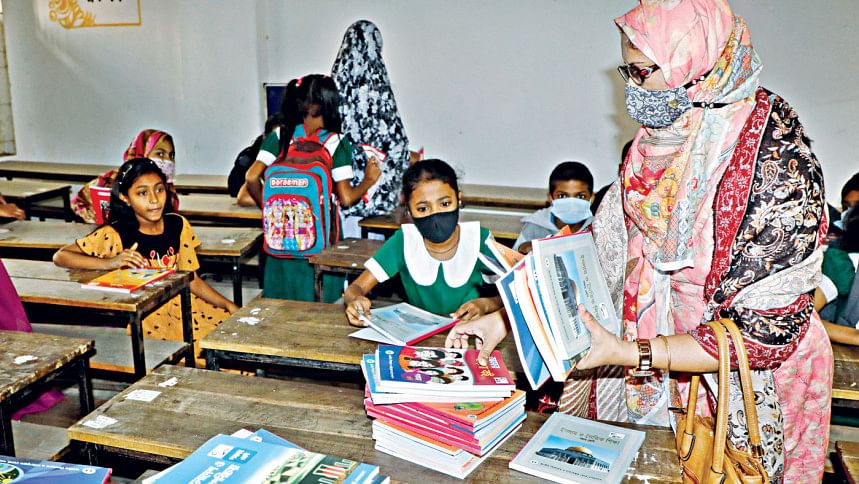
The 2030 SDG agenda and the 2041 vision of reaching the status of a developed country call for wide-ranging change in the education scenario, but the pace and nature of change do not show that we are on track to bring about the envisioned difference. As noted above, analyses of the education sub-sectors and the cross-cutting issues across the sector show evidence of the partial, reactive, and conventional 'within-box' activities in educational development that have not quite produced the desired results. A more comprehensive and holistic transformation of education has to be conceived, designed, and implemented. The priorities and strategies have to be set within a framework of transformative development. This is what is attempted to be explained in the book on educational transformation and presented in the 20-point action agenda grouped under five themes – policy, goals, strategies, organizational capability, and political commitment. These themes help to define the five areas of critical tasks.
1. Policy priority: Promoting an equitable society through education. Education will be the instrument for combating disparity and discrimination in society and not the tool for aggravating and creating new inequality. This overarching policy priority would subsume as policy objectives enhancement of the public good character of education, and making the four fundamental principles of the constitution – nationalism, democracy, socialism, and secularism -- the touchstones for policy guidance in education. Contemporary and contextual implications for the education of these generic concepts have to be worked out and reflected in policy and programs.
2. Foundationalgoal: Implementing a time-bound plan for equitable and inclusive K-12 school education of acceptable quality for all children. Sub-tasks related to this basic goal would be setting and achieving targets for early childhood development and preschool education, vocational-technical skill development, tertiary education, madrasa education, and lifelong learning. Universal school education is the foundation of the system.
3. Key strategy: Strengthening the education workforce in their professional skills, motivation, performance and adequacy of numbers. Ways have to be found within a ten-year time frame to attract to the education workforce the brightest young people and keep them in the profession. Related strategic actions would be area-based decentralized education planning and management, shaping education response to climate change impact, and effective use of digital technology in education.
4. Organizational capacity-building: Establishing district education authorities for delivering equitable K-12 education. This would be the key element of education sector planning and management covering sub-sectors and cross-sectoral issues, bringing education and human capital development under one central ministerial authority, and creating a strengthened higher education commission.
5. Political commitment: Vowing to promote academic autonomy of the education system and education institutions and protecting education from partisan and narrow political interventions. Related tasks would be to establish a high-power permanent education commission, adopt a right-to-education law, and education resource mobilization for equitable and inclusive education with acceptable quality for all.
The five tasks and related sub-tasks do not by themselves constitute an action plan for educational transformation. The 20-point action guides and five-point thematic priorities derived from critical analysis of subsectors and cross-sectoral areas can provide the building blocks of such a work plan with further priority setting and phasing of implementation.
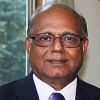
 For all latest news, follow The Daily Star's Google News channel.
For all latest news, follow The Daily Star's Google News channel. 



Comments